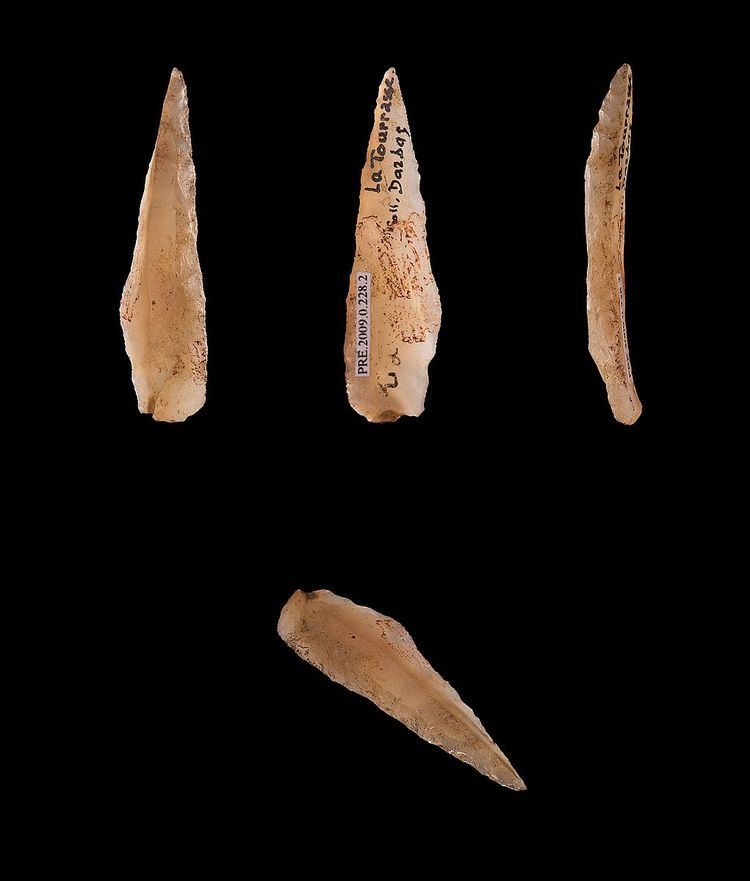 | ||
Epipaleolithic is a term used for the "final Upper Palaeolithic industries occurring at the end of the final glaciation which appear to merge technologically into the Mesolithic". The period is generally dated from c. 20,000 BP to c. 10,500 BP, having emerged from the Palaeolithic era.
Contents
Term usage
The term is sometimes used as a synonym of Mesolithic. When a distinction is made, Epipaleolithic stresses the continuity with the Upper Paleolithic and Mesolithic as we understand it today, whilst Protoneolithic stresses a subsequent transition to the Neolithic. Alfonso Moure says in this respect:
In the language of Prehistorical Archaeology, the most extended trend is to use the term "Epipaleolithic" for the industrial complexes of the post-glacial hunter-gatherer groups. Inversely, those that are in transitional ways towards artificial production of food are inscribed in the "Mesolithic".
Some authors reserve the term Mesolithic for the cultures of Europe, where the extinction of the megafauna had a great impact on the Paleolithic populations at the end of the Ice Age, from c. 8000 BCE until the advent of the Neolithic (Sauveterrian, Tardenoisian, Maglemosian, etc.).
Hunter-gatherers
Epipalaeolithic hunter-gatherers, generally nomadic, made relatively advanced tools from small flint or obsidian blades, known as microliths, that were hafted in wooden implements.
Animal food sources
The Epipaleolithic is best understood when discussing the southern Levant, as the period is well documented due to good preservation at the site. The most prevalent animal food sources in the Levant during this period were:
These were most likely the main food sources throughout the Pre-Pottery Neolithic A (PPNA) period. Of these animals, it is likely that only the equids were migrational.
